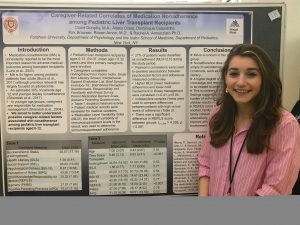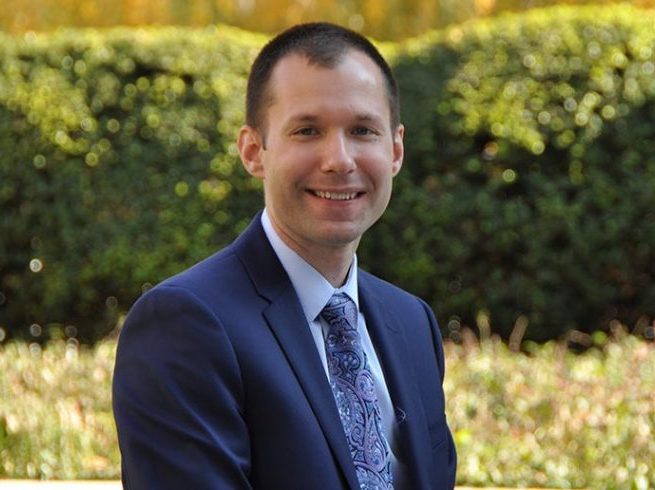By Julia Rist

Fordham University held its 11th annual Undergraduate Research Symposium in the McGinley Ballroom, where more than 300 students and 75 faculty members attended to present their findings. Maura Mast, Ph.D., dean of Fordham College of Rose Hill, said this event has come quite a long way since the Research Symposium first started in 2007.
“It’s been 11 years of amazing growth in research at the Fordham College of Rose Hill,” Mast said. “Eleven years ago, the college funded a handful of students pretty much just in the sciences to conduct summer research. At the first research symposium, only 36 students presented their work.”
Mast said that research at Fordham has grown tremendously since then. Now, research is not limited to physical sciences, but encompasses a vast array of disciplines from psychology to marketing.
“As in the past, students are presenting their work from biology, chemistry, mathematics,” said Mast. “They’re also presenting their findings in psychology, modern languages, visual arts and sociology. We’ve expanded undergraduate research in every way we can.”
Mast said that the Fordham College of Rose Hill (FCRH) has awarded around two million dollars to support students’ research grants.
For many students, this research presentation was not their first. Dozens of students have presented their research at national and international conferences. Fordham students have been coauthors on 100 publications, and they have been either first or second authors on 150 external research presentations, according to Mast.
Christina Sheedy, FCRH ’18, worked with a team of her peers in an effort to make different copper cyanide polymers. For their research, each member worked with a different chemical base to create mixed-valence polymers. Sheedy said that the task of conducting the tests of this project was a lengthy one.
“The first thing we usually do is after we do the prep, and get a crystal from that prep, is we do an infrared spectroscopy, so that we can see what’s going on,” Sheedy said. “After that, we use X-Ray powder diffraction to identify the structure. Then, we use thermal gravimetric analysis and electronic spin resonance.”
Sheedy worked with a group of five fellow students and one professor to complete this research project. Sheedy said the goal for the project was to create a six-coordinate copper cyanide polymer.
“It’s very difficult to make, and there are some out there. We’re just trying to add as many as we can and try to create new things,” Sheedy said.
Dominique Calandrillo, FCRH ’18, researched medication nonadherence in liver transplants of child patients from the perspective of the caregiver. To do so, her research team looked to see if liver transplant patients were taking the correct doses of their medication or if they were taking their prescribed medications at all.
Calandrillo studied 31 patients who were being treated at Mount Sinai Hospital. She said 27 of the patients were classified as nonadherent. Calandrillo and her team gave the patients’ families eight separate questionnaires to arrive at this conclusion.
“[The nonadherence] was correlated with lower child involvement and less knowledge about the illness,” Calandrillo said. “We concluded that we should have more child knowledge and responsibility within their self-regimen. Even though they are young now, it could help with adherence now and in the future.”
She said that children should be given more responsibility when it comes to taking care of themselves and knowing about their illness.
“This is contrary to what other findings have said,” said Calandrillo. “They say that because these children are so young, if we place the burden of having a child medically manage themselves it could lead to poor outcomes. We’re saying the complete opposite.”
Nicole Into, FCRH ’18, tried to better understand the effectiveness of digital marketing on college students. Into is part of Fordham Marketing Association, and this year, the club went to the American Marketing Association’s International Collegiate Conference to present its findings.
Into asked dozens of Fordham students which social media platform they find the least intrusive out of Snapchat, Twitter, Email, Instagram and Facebook. Snapchat, Twitter and email were both considered the least intrusive among Fordham students.
“We found that Instagram, Snapchat and email were the most effective way of reaching them,” Into said. “We also found email, Snapchat and Twitter the least intrusive.”
The Fordham Undergraduate Research Symposium also coincides with the Fordham Undergraduate Research Journal’s (FURJ) eighth edition, which features work from a number of the presenters.






































































































































































































